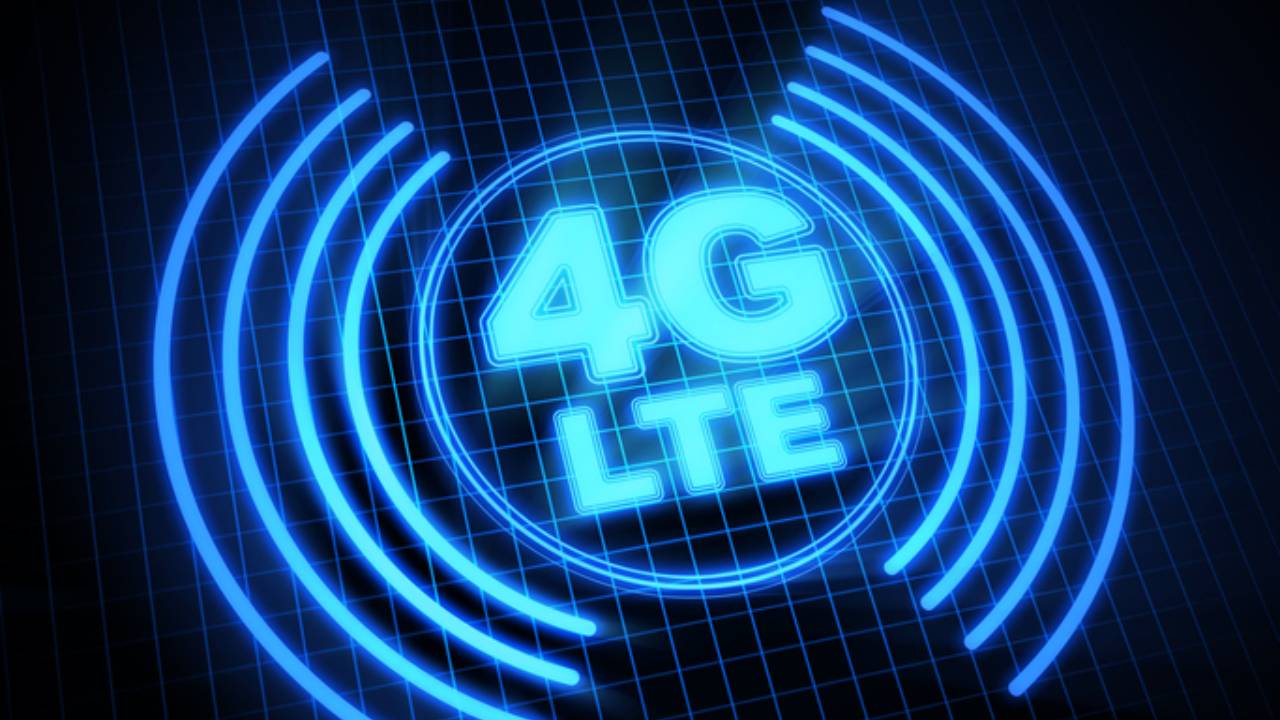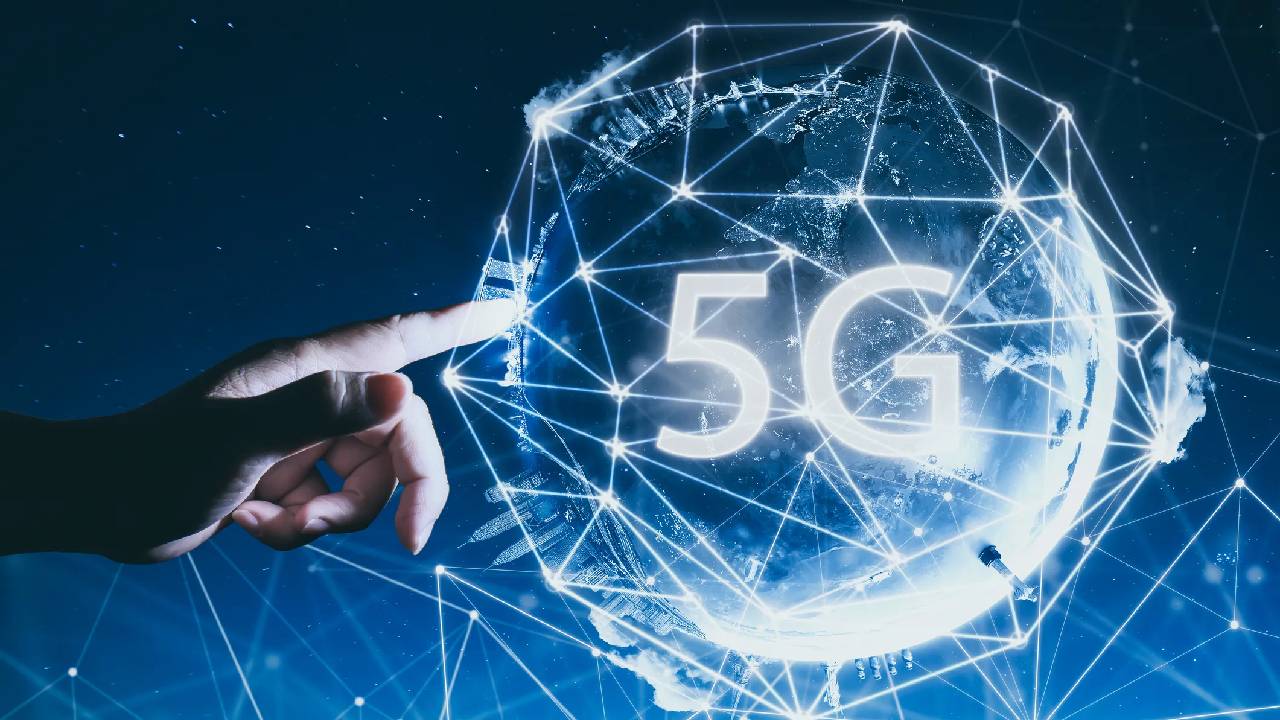In the present high-speed computerized age, remaining associated has turned into a fundamental piece of our day-to-day routines. Versatile networks, specifically, have seen a momentous change as of late. 5G’s arrival ushers in an era of lightning-fast, reliable connectivity, promising unprecedented speed and reliability in the digital landscape.
This article dives into the charming examination of “5G versus 4G,” giving a concise outline of the versatile network scene.
As the interest for quicker and more dependable organizations floods, understanding the development from 4G to 5G becomes a question of interest, however a need for anybody looking to bridle the maximum capacity of the computerized world.
Thus, how about we set out on this excursion, investigating the critical contrasts and progressions in these two ages of versatile organizations?
Understanding 4G
When we talk about the advancements in mobile connectivity, it’s crucial to begin with a clear comprehension of 4G technology. 4G, the fourth-gen mobile network, transformed smartphone usage, marking a significant leap in connectivity and device utilization.
Here, we’ll explore 4G fundamentals, spotlighting its features, benefits, and constraints that laid the groundwork for the evolution to 5G.
What is 4G Technology?
4G technology, short for fourth-generation technology, represents a substantial shift in the realm of mobile communication. 4G set a fresh cellular network standard with speedier data transfers, superior call quality, and a smoother internet experience.
4G’s arrival empowered users with faster, more reliable internet access, seamless video streaming, and engaging online experiences surpassing previous standards.
Advantages of 4G Connectivity
In the world of mobile networks, 4G stands as a significant milestone. Its advantages have redefined the way we connect and communicate. Here, we explore the key benefits of 4G connectivity:
- Faster Data Transfer: 4G networks provide significantly faster download and upload speeds compared to previous generations, ensuring quicker access to content and information.
- Improved Call Quality: Voice calls made over 4G are characterized by clearer sound quality and greater reliability, facilitating better communication.
- Enhanced Internet Experience: Browsing the web on 4G offers a smoother and more seamless experience, allowing for faster page loading and responsive online interactions.
- Video Streaming: 4G networks enable high-definition video streaming with minimal buffering, making it perfect for enjoying movies, TV shows, and live content.
- Online Gaming: Gamers benefit from low latency in 4G networks, ensuring that online gaming experiences are free from lags and delays.
- Fast Downloads: Downloading large files, whether it’s apps, documents, or media, is noticeably quicker and more convenient on 4G networks.
- Crystal-Clear Video Calls: Video calls conducted over 4G boast high-quality visuals and audio, offering a seamless and immersive communication experience.
- Data-Intensive Apps: 4G networks allow the uninterrupted usage of data-intensive applications, such as video conferencing, cloud services, and multimedia streaming.
Read Also: How to Fix Disney Plus Error Code 83 on Any Devices?
Limitations of 4G Networks
While 4G technology marked a significant leap forward, it was not without its limitations. Coverage areas, while expanding, were not yet ubiquitous, which meant that in remote or less densely populated areas, users might still encounter dead zones or slower data speeds. High information interest and organization blockage in jam-packed spots frequently brought about slower rates and a less reliable client experience.
Furthermore, as data-hungry applications and services continued to proliferate, the limitations of 4G networks became increasingly apparent, paving the way for the future, 5G, to address these issues
The Emergence of 5G
As we proceed with our investigation of the steadily developing scene of versatile networks, it’s difficult to overlook the extraordinary effect of the fifth era, known as 5G.
This part digs into the development of 5G innovation, offering a thorough comprehension of what it is, the key highlights that put it aside, and the fascinating advancement from the first 4G organizations to this state-of-the-art standard.
What is 5G Technology?
5G innovation, or fifth-age innovation, addresses the most recent and exceptional cycle of portable organization norms. In contrast to its predecessors, developers designed 5G with a specific focus on addressing the limitations of previous generations, especially the need for faster and more reliable connections.
It introduces another period of the network, portrayed by essentially higher information speeds, lower dormancy, and the capacity to at the same time interface an unfathomably more prominent number of gadgets.
Key Features of 5G Networks
Designed to usher in a new era of mobile connectivity, the key features of 5G networks offer unparalleled advantages:
- Blazing-Fast Data Speeds: 5G organizations can accomplish multi-gigabit-per-second information speeds, empowering lightning-quick downloads, consistent streaming, and quick ongoing communications.
- Ultra-Low Latency: With fundamentally diminished dormancy, 5G takes into account close momentary correspondence, basic for applications like internet gaming, expanded reality, and independent vehicles.
- Massive Device Connectivity: 5G can flawlessly interface countless gadgets, making it a key part of the Web of Things (IoT), empowering brilliant urban communities, associated homes, and modern computerization.
- Enhanced Capacity: 5G organizations can help an enormous expansion in the volume of information traffic, guaranteeing that the organization stays responsive even in packed regions.
- Improved Reliability: Enhanced dependability makes 5G a viable choice for critical applications in industries like healthcare and manufacturing.
- Network Slicing: 5G offers the capacity to make “cuts” of the organization to fit execution and the ability to explicit applications, guaranteeing ideal help for different use cases.
- Advanced Antenna Technologies: The utilization of cutting-edge radio wires, for example, gigantic MIMO (Numerous Information, Various Result), empowers exact and productive information transmission and gathering.
- Energy Efficiency: 5G organizations are intended to be more energy-effective, lessening the carbon impression related to information transmission.
- Security: Improved safety efforts are a centerpiece of the 5G plan, guaranteeing the security of information and correspondences in an undeniably associated world.
- Global Standard: 5G is becoming a global standard, ensuring compatibility and seamless roaming across countries and regions, offering consistent service worldwide.
Evolution from 4G to 5G
The progress from 4G to 5G addresses a stupendous jump in versatile organization innovation. While 4G was without a doubt a unique advantage now is the right time, the developing interest for information and the requirement for basically quick network pushed the business to create 5G.
The development was driven by a mix of mechanical progressions, including the utilization of higher recurrence groups, high-level radio wire innovations, and imaginative organization structures. These upgrades were intended to address the impediments of 4G organizations, especially concerning inclusion, speed, and limit.
This progress upgrades the client experience as well as opens additional opportunities for ventures, making 5G a fundamental part of our inexorably associated world.
Speed and Latency
As we dig further into the captivating domain of versatile availability, one of the most prominent differentiations in the “5G versus 4G” banter lies in the spaces of speed and idleness. These perspectives are principal in understanding the capacities and benefits that 5G organizations offer of real value.
In this segment, we will investigate the similar speed of information transmission somewhere in the range of 4G and 5G and dive into the critical job of low idleness in molding the eventual fate of availability.
Comparing Speed: 4G vs 5G
While looking at the speed of information transmission somewhere in the range of 4G and 5G organizations, the distinctions are completely exceptional. We should investigate the critical speed contrasts somewhere in the range of 4G and 5G organizations:
| Aspect | 4G Speed | 5G Speed |
|---|---|---|
| Download Speed | Typically 20 to 50 Mbps | Multi-gigabit-per-second speeds |
| Upload Speed | Around 10 to 30 Mbps | Significantly faster |
| Streaming and Gaming | Some buffering and lag | Virtually no buffering, lag |
| Large File Downloads | Slower downloads | Lightning-fast downloads |
| Video Calls | Occasional quality issues | Crystal clear and seamless |
| User Experience | Noticeable loading times | Instantaneous interactions |
| Data-Intensive Apps | Potential slowdowns | Uninterrupted, smooth usage |
The speed comparison between 4G and 5G paints a vivid picture of the transformative leap in mobile connectivity. While 4G brought improvements over previous generations, 5G sets a new standard, offering data speeds that are hundreds of times faster.
This means that tasks that once involved waiting for data to load or dealing with buffering and lag become nearly instantaneous on a 5G network, providing a superior user experience and unlocking new possibilities for a wide range of applications.
The Role of Low Latency in 5G
In the world of 5G innovation, low dormancy assumes an essential part in characterizing its capacities. Inertness alludes to the time it takes for information to make a trip from a shipper to a beneficiary, and low idleness is urgent for constant applications and encounters.
5G networks offer a significant reduction in latency, often achieving one millisecond or less. This practically quick reaction time is crucial for applications like web-based gaming, where even a brief moment deferral can be the distinction between triumph and rout.
Furthermore, low inactivity is a foundation for rising innovations like independent vehicles and telemedicine, where parted second choices and correspondence are fundamental. With regards to “5G versus 4G,” the low idleness of 5G addresses a quantum jump forward, making it a distinct advantage by the way we cooperate with and use associated gadgets and administrations.
Coverage and Infrastructure
As we adventure further into our investigation of “5G versus 4G,” we experience a basic perspective that fundamentally influences the client experience and openness of these organizations: inclusion and foundation.
The capacity to interface with an organization dependably, paying little heed to the area, is a basic thought for both 4G and 5G organizations.
In this part, we’ll look at how 4G organizations have extended their inclusion over the long run and the continuous journey for pervasive 5G inclusion, guaranteeing that availability is accessible any place we go.
Expanding Coverage: 4G Networks
4G organizations have made considerable progress in growing their inclusion since their underlying presentation. Throughout the long term, media transmission organizations have put vigorously in foundation to broaden the compass of 4G, even to rustic and far-off regions.
This development has achieved critical upgrades in availability, with numerous areas currently getting a charge out of 4G access.
However, despite these strides, challenges persist, and there are still areas with limited or no 4G coverage, leaving some users in a less connected state. Nonetheless, 4G has served as a substantial stepping stone in the journey towards providing reliable mobile connectivity to a wider audience.
The Quest for Ubiquitous 5G Coverage
The evolution to 5G is accompanied by an ambitious mission: achieving ubiquitous coverage. The point is to guarantee that 5G organizations are open in metropolitan, rural, and far-off regions the same.
To achieve this, telecom organizations are tenaciously structured the fundamental framework, which incorporates a thick organization of little cells, monstrous MIMO radio wires, and a broad fiber-optic spine.
This thorough methodology expects to address one of the impediments of 4G, especially in rustic regions, where inclusion can be patchy.
By giving consistent 5G network across different scenes, the business looks to overcome any barrier and make the advantages of high velocity, low-dormancy 5G accessible to a lot more extensive populace, changing how we stay associated in our daily existences.
Use Cases and Applications
The always-developing scene of “5G versus 4G” doesn’t exclusively spin around quicker rates and lower inertness. In this segment, we adventure into the pragmatic domain of purpose cases and applications, investigating how 5G innovation vows to change our lives in a manner that 4G would never completely understand.
We’ll dig into how 5G upgrades the versatile experience and how it goes about as an impetus for the Web of Things (IoT) and Industry 4.0, introducing a period of development and network.
Enhancing the Mobile Experience with 5G
5G’s potential for upgrading the portable experience is out and out progressive. With its lightning-quick paces, clients can partake in a consistent excursion through the digital world. Streaming high-definition content on the go becomes a buffer-free reality, and downloading large files is virtually instantaneous.
This means completely clear video calls, vivid increased and virtual reality encounters, and slack-free online gaming, giving a degree of the network that fundamentally outperforms the capacities of 4G.
Whether you’re a substance maker, an enthusiastic gamer, or somebody who depends on your cell phone for work, 5G’s effect on the portable experience is extraordinary, offering a brief look at a future where each internet-based communication is smooth, responsive, and charming.
Read Also: Explore Top 14 Metaverses: Virtual Realms Redefined
How 5G Enables IoT and Industry 4.0
5G is a key part of the progression of the Web of Things (IoT) and Industry 4.0, two momentous ideas that are reshaping how we live and work. IoT depends on interconnected gadgets and sensors to gather and trade information and 5G’s low idleness and high gadget limit make it the best organization for this reason.
From smart homes and cities to precision agriculture and healthcare, 5G enables a world where devices can communicate seamlessly and make real-time decisions, improving efficiency and convenience.
In the realm of Industry 4.0, 5G transforms manufacturing and production processes. With its ability to support a vast number of devices, it facilitates autonomous machinery, remote monitoring, and predictive maintenance. This means factories can operate with unparalleled efficiency, reducing downtime and waste.
As we continue to navigate the landscape of “5G vs 4G,” it becomes clear that 5G’s impact extends far beyond the mobile phone, influencing how industries and technologies evolve, and bringing us closer to a smarter, more connected future.
5G Challenges and Concerns
While the coming of 5G innovation delivers a huge number of commitments and open doors, it isn’t without its portion of difficulties and concerns. In this segment, we will dive into a portion of the major questions encompassing 5G, offering a fair point of view in the continuous discourse of “5G versus 4G.”
We’ll explore the critical matters of security and privacy, potential health concerns, and the spectrum and infrastructure challenges that this cutting-edge technology faces.
Security and Privacy
As 5G organizations keep on developing, the issue of safety and protection poses a potential threat. With the rising availability of gadgets and information, there are authentic worries about the weakness of the organization in cyberattacks and the potential for security breaks.
5G’s dependence on an immense number of interconnected gadgets and its low dormancy can be both an aid and a plague. While low latency is essential for real-time applications, it also opens the door to rapid cyber threats.
Addressing these concerns is a top priority for the industry, and ensuring the security and privacy of 5G networks is a critical part of the ongoing discussion of its merits compared to 4G.
Potential Health Concerns
The rollout of 5G innovation has started conversations regarding potential well-being concerns related to expanded openness to radiofrequency (RF) radiation. While research is progressing, some have brought up issues about the effect of 5G’s higher recurrence groups on human well-being.
The worry focuses on the possible long-haul impacts of openness to these frequencies, and whether they might have unfriendly results. It’s vital to take note that mainstream researchers proceed to survey and research this theme, and any ends are likely to additional examination.
Spectrum and Infrastructure Challenges
The spectrum and infrastructure challenges associated with 5G are intricately linked to the expansion of this technology. 5G networks require an extensive network of small cells and base stations to provide seamless coverage.
This rollout necessitates a substantial investment in infrastructure, including fiber-optic connections and significant spectrum allocation. The challenge is not only in building the required infrastructure but also in managing the available spectrum efficiently.
Spectrum allocation and management are critical for minimizing interference and ensuring the optimal functioning of 5G networks. Balancing these demands while delivering on the promise of 5G is a complex task that industry leaders are actively addressing.
In the ongoing comparison of “5G vs 4G,” these challenges underscore the ambitious journey toward the full realization of 5G’s potential.
Transitioning from 4G to 5G
In the dynamic realm of “5G vs 4G,” the transition from the established 4G networks to the transformative era of 5G is a pivotal journey. It’s a transition that holds the promise of enhanced connectivity, greater speed, and an array of new possibilities.
This section will explore the steps involved in preparing for the 5G era and the critical challenges and considerations that both consumers and the industry must grapple with during this momentous shift.
Preparing for the 5G Era
The progress from 4G to 5G isn’t just a mechanical overhaul but a major change in the way we interface and convey. To plan for the 5G period, people and organizations the same need to think about a few key perspectives:
- Device Compatibility: Ensuring that your devices are 5G-capable or can be upgraded is a critical first step. From smartphones to IoT devices, compatibility with 5G networks is vital for unlocking the full potential of the technology.
- Network Infrastructure: Telecommunication companies are investing heavily in building the necessary infrastructure for 5G. Understanding the network rollout plans in your area and being aware of the availability of 5G coverage is essential.
- Data Plans: Different 5G plans and packages will be available, each offering various speeds and data allowances. Picking a well-conceived plan that lines up with your information utilization and necessities is a thought for progress.
- Security and Privacy: As 5G presents new abilities and weaknesses, it’s significant to be educated about potential security gambles and to go to lengths to safeguard your information and protection.
Challenges and Considerations for the Transition
The transition from 4G to 5G presents challenges and considerations that span both individual and industry-wide perspectives. These include:
- Cost of Deployment: Building 5G infrastructure is a substantial financial investment for telecommunications companies, and this can impact the pricing of 5G services.
- Coverage Gaps: Ensuring that 5G coverage is extensive and reaches underserved areas is a challenge, particularly in less densely populated regions.
- Regulatory Hurdles: Navigating the regulatory landscape to secure necessary permissions and allocate spectrum for 5G networks can be complex and time-consuming.
- Education and Awareness: As 5G turns out to be more predominant, people and organizations should instruct themselves on the capacities, advantages, and likely difficulties of innovation to settle on informed choices.
As the world advances from 4G to 5G, these contemplations and difficulties will shape the experience and effect of the new time of the network. It’s an excursion set apart by both energy and the requirement for smart preparation and variation.
Conclusion
In the continuous investigation of “5G versus 4G,” we wind up at the point of a striking change in the portable network. What’s to come guarantees a period of availability that will keep on rethinking how we live, work, and interface with the computerized world.
With the rollout of 5G, we stand near the very edge of thrilling outskirts, described by lightning-quick paces, close momentary reactions, and a bunch of inventive applications that were once consigned to the domain of sci-fi.
The Fate of Versatile Network holds the potential for uncommon progressions in expanded and virtual reality, telemedicine, independent transportation, and the Web of Things, carrying us nearer to the fantasy of a completely interconnected, savvy world.
Amidst this exciting evolution, one vital consideration remains – Choosing the Right Network for Your Needs. Every age of portable network has its arrangement of benefits and limits.
4G might be impeccably appropriate for some, while 5G opens up a universe of opportunities for other people. It’s fundamental to survey your particular necessities, whether they include quick-moving online gaming, top-quality streaming, or IoT applications, and select the organization that lines up with your inclinations.
As we push ahead, how about we embrace this excursion of change together? We welcome you to share your considerations, questions, and encounters in the remarks below.
Your criticism is important in keeping this discourse alive and imparting this astonishing data to your companions can assist with guaranteeing that others are likewise very much informed about the developing scene of the versatile network. What’s to come is splendid, and the decisions are abundant. We should leave on this thrilling excursion of “5G versus 4G” together, as we introduce another time of availability and advancement.










